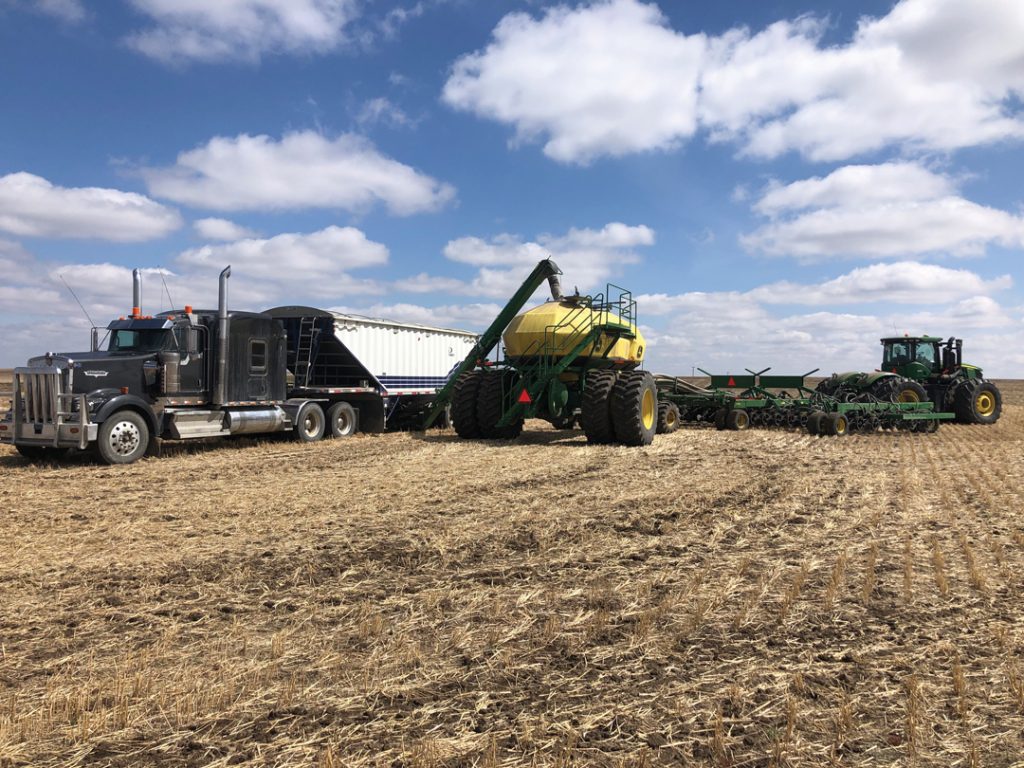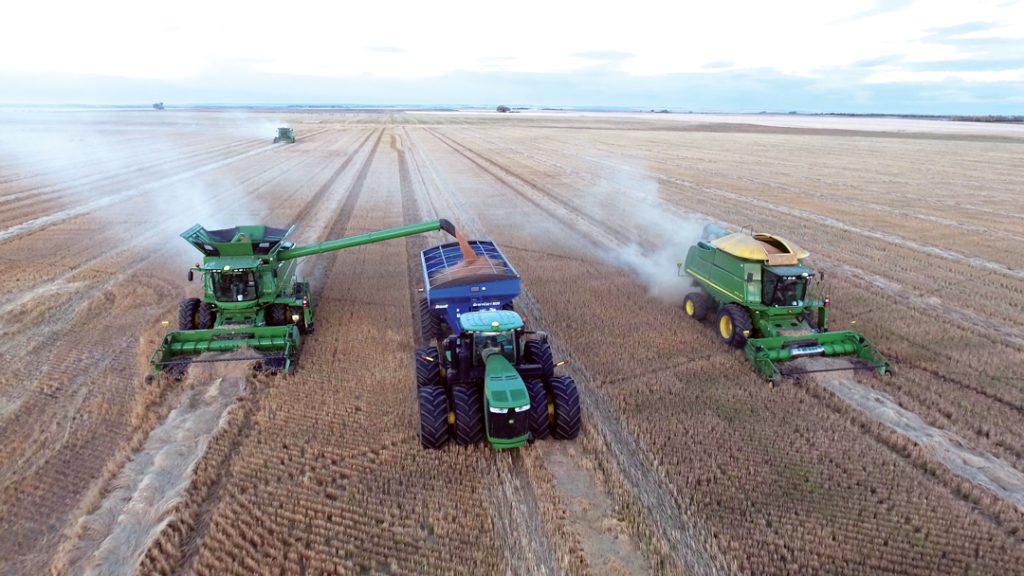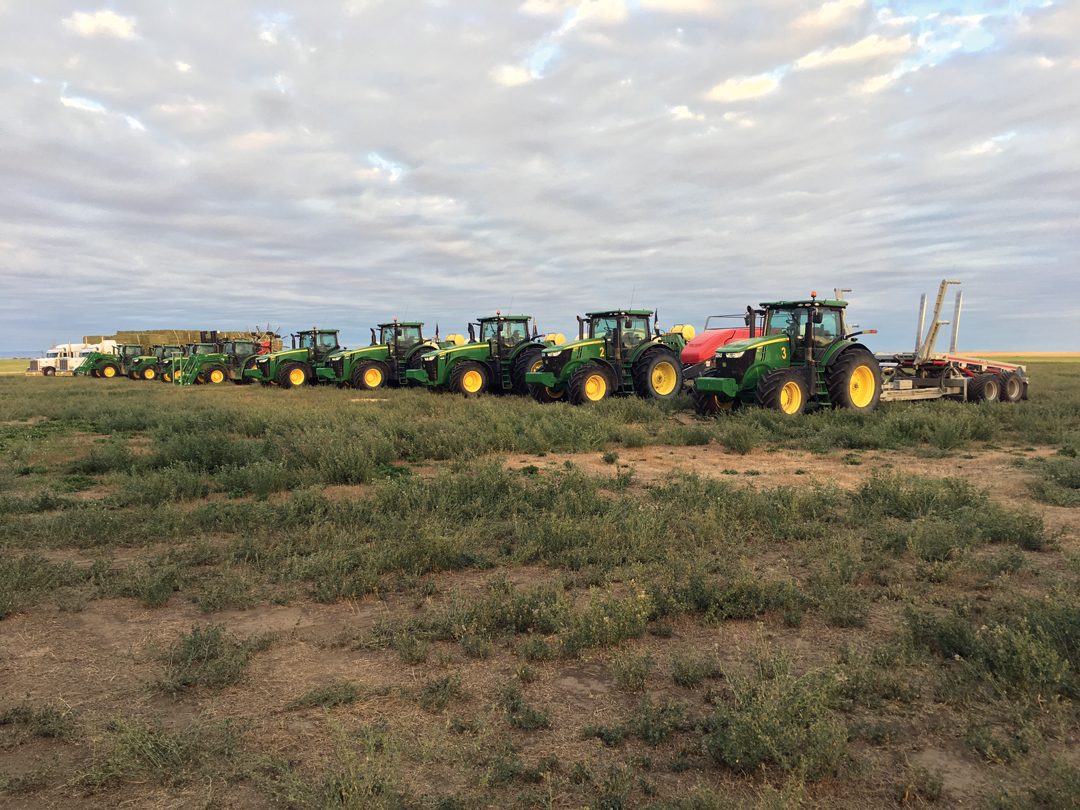HELP! I NEED SOMEBODY
BY TREVOR BACQUE • PHOTOS COURTESY OF HUBKA FARMS
It’s painfully obvious Canadian agriculture has room to close its domestic labour gap. The message has been repeated often enough that it’s starting to fall on deaf ears. However, the industry may need to listen up if it wants to stem the exodus of domestic workers.
It’s painfully obvious Canadian agriculture has room to close its domestic labour gap. The message has been repeated often enough that it’s starting to fall on deaf ears. However, the industry may need to listen up if it wants to stem the exodus of domestic workers.
According to a blistering June 2019 report from the Canadian Agricultural Human Resource Council (CAHRC), How Labour Challenges Will Shape the Future of Agriculture: Agriculture Forecast to 2029, Canada has a problem, and it’s only going to worsen. In 2017, there were 16,500 vacant domestic farm jobs across the country, which cost the industry $2.9 billion in lost revenue. More than doubling in a mere three years, that number is up from $1.4 billion lost in 2014.
Farmers often turn to international labourers to bridge the gap, but that’s a time consuming and costly process. Despite this, foreign labour in Canada now represents 17 per cent of the overall farm workforce.
By the end of this decade, CAHRC predicts domestic jobs going unfilled could climb to 123,000, or 32 per cent, of workforce positions.
The agriculture sector has inherent labour issues that cannot be remedied overnight. These include seasonal fluctuations in employment and the shrinking of agricultural operations in rural areas. A raft of perceived negatives includes physically demanding work. As well, agricultural managers cannot raise wages and send costs down the line. There is real cause for concern.
“While many sectors face one or two of these labour challenges, no other sector faces all of them at once, and their cumulative effect on Canada’s agriculture industry has added to the difficulties agricultural employers face,” the report states.
However, this doesn’t surprise Debra Hauer, a senior manager at CAHRC. “Ag producers are finding it increasingly more difficult to find and keep workers,” she said. “Producers have larger operations and they are looking for people with a higher level of skills and knowledge to run larger machinery.”
She points to families having less children and parents encouraging those same kids to strike out on their own and live a life off the farm. “Young people growing up on a farm are encouraged by their parents to go to post-secondary education, pursuing their own careers. This is a worldwide trend.”
The federal government has tried multiple times to rectify the issue over the years with varying degrees of success, depending who is polled. Its most recent solution is the new Agri-Food Immigration Pilot, a three-year, fast-track program allowing foreign workers to earn permanent residency. The program is open and will annually accept 2,750 workers. This focuses on perennially understaffed professions such as meat processing, mushroom production and greenhouse labourers.
Hauer hopes the program will receive a positive response and signal government that additional programs are needed to close the gap. If not, the pinch points will get progressively more painful. “[The labour shortage] might mean that people will change what they produce,” she said. “It may mean Canada can’t take advantage of opportunities that are there for agricultural production.”
And despite agriculture proudly beating its automation drum, Hauer believes increased mechanization is fraught with its own issues. Skilled people are required to build, maintain and repair the increasingly complex hardware and software.

The agriculture sector has inherent labour issues that cannot be remedied overnight. At the top of the page, a selection of Hubka Farms’ trucks and implements sits ready for work.
FIELD FINDINGS
Elaine Bellamy operates a 10,000-acre grain and oilseed farm near Strathmore. Unlike others, she has a modestly sized local talent pool to draw from. However, her situation is far from perfect.
Were she to lose just one of her solid, but aging, crew of retired farmers or truckers, Bellamy would be in a bind. For trucking, paying a person to be trained on a class 1 licence isn’t her primary issue, but rather the time the process takes, which is about six weeks. Simply put, it’s worrisome.
“It is an absolute necessity to have people who have their class 1s as part of my operation,” she said. “I could not operate in seeding or harvest without my class 1 operators.” A couple of her operators have now cracked 80 years of age and, despite their love of the work, their age cannot be overlooked.
“We have a great crew we can rely on, but some of those retired farmers are getting older … and older farmers are more apt to have accidents,” she said. “When you have a lot of combines operating and two grain carts whizzing around, you need to have people that are alert. We don’t want any accidents or crashes.”
When these skilled and experienced workers do retire, they’re not easy to replace. “Where are we going to find the skilled people?” said Bellamy.
She also deals with the wage issue. There’s only so much a person can be paid, skilled or not, in a price-taking profession. “In a normal career as a teacher, every year you’re going to get a pay increase,” she said. “Yes, we do give pay increases, but with the depressed global market, how much can we keep doing to increase the wages? You really have to look at some of the other benefits of living out in the country.” Wide open spaces may be an initial draw, but country life is often too isolating for those unaccustomed.
Another ongoing thorn in Prairie farmers’ fannies is the nearby oil and gas sector, where agriculture is always the bridesmaid and never the bride. Farming wages have simply never been able to compete.
Cale Hubka knows this reality all too well. The southern Alberta forage producer simultaneously supports and loathes the oil and gas sector. “In the last 10 to 15 years there have been ups and downs in the oil patch. Workers get laid off, don’t have work, and are looking for something else to do,” said Hubka. “I’m very reluctant to hire them because as soon as the oil patch picks up, they’re gone. If their resume states that they’ve been in the oilfield for a number of years, I don’t even look at them anymore.”
Hubka typically employs anywhere from 11 to 13 workers at peak times, paying at least $19 per hour. His core full-timers also receive health benefits. Although he has been dissatisfied with the attitude of certain Canadian workers over the years, he found a failsafe a world away: Kiwis.
Since 2007, he’s turned to eager New Zealanders for on-farm support. The country is brimming with young people curious for Canadian experience and adventure. To top it off, the nation is heavily into ag, meaning Hubka’s future employees arrive pre-loaded with relevant experience.
“If I need a baling operator, there are people to pick from in New Zealand that have lots of baling experience,” he said. “Training is minimal with these guys and the seasons work really well. They have no family to deal with, no holidays, they don’t care about any of that. They work hard, put in the hours and show up to work every day.”
He requires his foreign workers to independently obtain working holiday visas while in New Zealand before arriving in Canada, giving him one less administrative task to complete.
Being in forages, Hubka often finds himself trucking product. Finding and retaining drivers is always on his mind. If a driver or two suddenly could not haul for him, work grinds to a halt, just like at Bellamy’s farm.
Following the tragic highway crash in Saskatchewan that killed 16 players and staff from the Humboldt Broncos junior hockey team, changes to trucking legislation were implemented under the provincial NDP government. Now, anyone wanting a class 1 licence must complete a 113-hour training course, which does not include a mandatory 8.5-hour air brake course. A class 2 licence requires 50 hours to complete.
Hubka said it used to cost him anywhere from $500 to $1,000 to have a person trained and certified with a class 1 licence. “It’s 10 times that now,” he said of training costs.
“It makes it even harder to find class 1 drivers.”
In addition to the $10,000 price tag for a class 1, as of Nov. 30, 2020, agriculture will no longer have any trucking exemptions and everyone will be required to be Mandatory Entry Level Training (MELT) compliant.
While Hubka admits changes to the licensing program were overdue, he’s still doubtful it’s effective for agriculture’s unique demands. “A clampdown was needed, however, I feel farmers got the short end of the stick,” he said, adding it is unfair to compare commercial trucking firms and farmers hauling primarily on rural routes. “There needs to be a difference in licensing.”

Hubka Farms headquarters is located just east of Clareholm. The forage operator typically employs 11 to 13 workers.
SILVER LINING
Despite the uphill battle the Canadian industry faces in securing homegrown help, there are bright spots. Those who work in agriculture truly seem to enjoy it, according to the CAHRC report. Its employee survey found that 73 per cent expected to spend five-plus years in the industry and 79 per cent recommend working in agriculture. The figure was noticeably higher than research from American consultancy Aon Hewitt, which reported the North America-wide figure to be 64 per cent across all industries.
“This suggests workers in agriculture are highly engaged and enjoy their work. Indeed, when asked what keeps them interested in working in the sector, 72 per cent reported they enjoy it, with other reasons including opportunities for career advancement (41 per cent), good management practices (40 per cent), job security (35 per cent) and working with family (34 per cent),” the report states.
Once an employee is in the system, they really like it. However, the first critical step is getting them to the farm gate. And for those already employed in agriculture, Hauer distinguishes between two types of workers: the ones who like the work and intend to stay, and those loosely interested who don’t.
“With domestic workers, people may have an interest working in ag, [but] are perhaps not aware of the variety of opportunities there are,” she said. “Agriculture needs to tell people the good stories that are there.”
To read the report, visit cahrc-ccrha.ca.

Durum wheat harvest underway at Hubka Farms.
FARM LABOUR BY THE NUMBERS
Domestic and international labour is in high demand in Canadian agriculture. The cold reality, though, is that the country is lagging behind. Alberta is not shielded from this labour gap, either. A dive into the numbers illustrates where the province finds itself.
In 2017, Alberta had:
• 54,455 domestic agricultural workers
• Four per cent foreign workforce
• 2,800 unfilled jobs due to labour shortages, even when accounting for foreign workers
• $821 million in lost sales due to lack of labour
By 2029, Alberta will wake up to the following reality:
• 63,000 total workers needed, a rise of 7,500
• 42 per cent of the 2020 workforce will have retired
• 19,600 jobs will be at risk of going unfilled
Alberta’s workforce is slated to grow 0.7 per cent per year over the next 10 years, outpacing the national average of 0.5 per cent annually. This will equal a jump to 63,000 workers from 57,300 by 2029. However, the domestic labour pool is expected to shrink by 10,400 by the end of the decade, largely driven by retirements.
One in three agricultural jobs in Alberta will remain vacant unless the labour issue is addressed. Forty-eight per cent of Alberta farmers were not able to find all the workers they needed in 2018, compared to 47 per cent across Canada. As well, 48 per cent of Alberta farmers expect employment at their farm to rise over the next five years, while only 21 per cent expect to see a decline.
Of 147 Alberta farmers surveyed, the top impediments cited in drawing workers included rural location and manual labour requirements as well as lack of qualifications and relevant experience among workers. According to the same respondents, retaining workers is hampered primarily by work conditions, the physical nature of the work, lack of advancement opportunity and remoteness. Notably, wages and benefits were also cited, but at a lower rate than the national average.
Problems inevitably arise when farm owners cannot fill vacant positions. CAHRC surveyed 61 Alberta farmers who did not have all the workers they needed. Ninety per cent experienced excessive stress, 56 per cent experienced lost sales, 53 per cent had production delays, 44 per cent delayed expansion and 26 per cent incurred overtime costs.
Note: All facts and figures are from the 2019 CAHRC report.







Comments